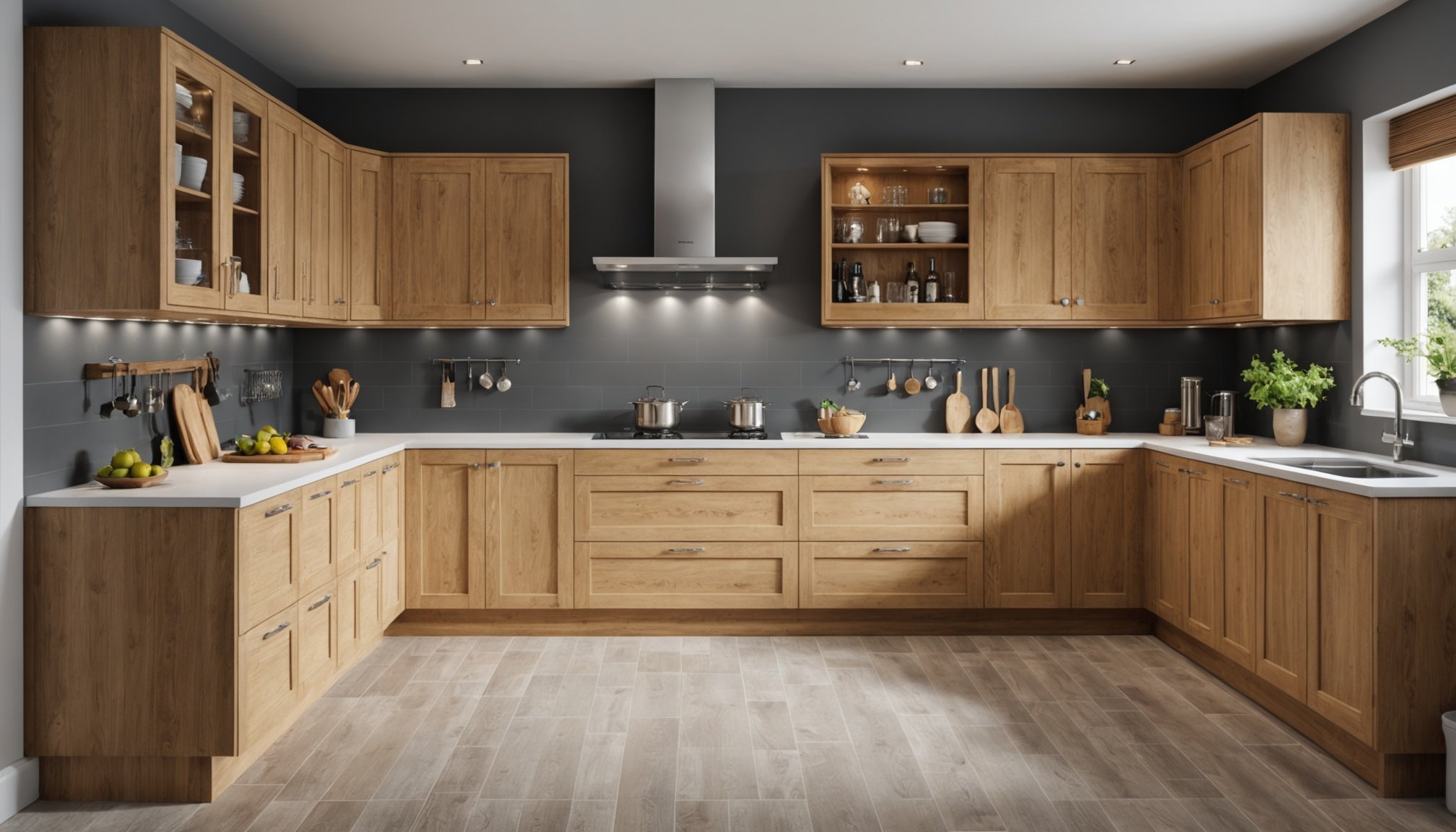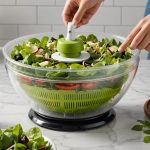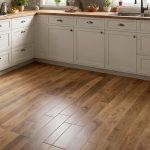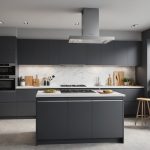When designing an eco-friendly kitchen, the choice of materials is essential. Sustainable kitchen cabinets not only reduce environmental impact but also enhance your home's aesthetics and functionality. This guide explores the best sustainable materials available in the UK, showcasing their benefits, durability, and style. Whether you’re renovating or building anew, these options help create a kitchen that aligns with your values while ensuring style and longevity. Discover how you can make a positive impact on the planet, one cabinet at a time.
Overview of Sustainable Kitchen Cabinets
Exploring eco-friendly options for a greener home
Also to discover : Discover the Best Egg Slicer for Perfectly Uniform and Neat Cuts!
Choosing sustainable kitchen cabinets is a crucial step towards an environmentally responsible home. These cabinets are crafted from materials that minimize environmental impact, such as reclaimed wood, bamboo, or recycled metal. The significance of sustainable kitchen cabinets lies in their contribution to reducing deforestation and promoting responsible resource use.
The Eco-Friendly Movement in Home Renovations
Transforming spaces with conscious choices
Also to discover : Discover the Best Egg Slicer for Perfectly Uniform and Neat Cuts!
The eco-friendly movement in home renovations has gained momentum as homeowners increasingly prioritize sustainability. This movement emphasizes using materials and practices that have a lower carbon footprint. Sustainable kitchen cabinets are at the forefront, offering a blend of style and environmental responsibility.
Benefits of Choosing Sustainable Materials
Why eco-conscious decisions matter
Opting for sustainable materials in kitchen cabinets comes with numerous advantages:
- Durability: Sustainable materials often have a longer lifespan, reducing the need for frequent replacements.
- Healthier Home Environment: These materials typically contain fewer harmful chemicals, contributing to better indoor air quality.
- Aesthetic Appeal: Many sustainable options offer unique textures and finishes that enhance the visual appeal of your kitchen.
Incorporating sustainable kitchen cabinets not only supports the planet but also enhances the quality and longevity of your home environment.
Types of Sustainable Materials
Exploring eco-friendly choices for kitchen cabinets
Introduction to Sustainable Materials
Selecting the right sustainable materials for kitchen cabinets can significantly impact a home's environmental footprint. These materials include bamboo, which grows rapidly and is highly renewable, and reclaimed wood, offering a second life to previously used timber. Additionally, recycled metal is gaining popularity for its durability and modern aesthetic. Homeowners seeking to make eco-conscious decisions should explore these options.
Natural vs. Synthetic Materials
When choosing kitchen cabinet materials, it's essential to weigh natural against synthetic options. Natural materials like bamboo and reclaimed wood are renewable and biodegradable. In contrast, synthetic materials such as recycled plastics offer durability and moisture resistance. Both categories have their merits, but natural materials often provide a more authentic and warm appearance.
Sustainability Certifications
Certifications play a crucial role in identifying genuinely sustainable materials. Look for labels like FSC (Forest Stewardship Council) and Cradle to Cradle, which ensure responsible sourcing and production. These certifications guarantee that the kitchen cabinet materials meet high environmental and social standards.
- Bamboo: Fast-growing, renewable
- Reclaimed Wood: Unique, character-rich
- Recycled Metal: Durable, modern
Choosing the right materials and understanding their certifications can significantly enhance the sustainability of your kitchen.
Bamboo as a Sustainable Option
Exploring the eco-friendly benefits of bamboo kitchen cabinets
Benefits of Bamboo
Bamboo kitchen cabinets offer numerous advantages due to their eco-friendly nature. Bamboo is a fast-growing grass, making it a highly renewable resource. This rapid growth rate allows for frequent harvesting without depleting the environment. Moreover, bamboo's natural strength and flexibility result in durable cabinetry that can withstand daily use.
- Renewability: Grows back quickly
- Strength: Comparable to hardwood
- Eco-Friendly: Low environmental impact
Durability and Maintenance
Bamboo kitchen cabinets are not only stylish but also robust. Their inherent durability means they resist scratches and dents, maintaining their appearance over time. Maintenance is straightforward, requiring only regular cleaning with mild soap and water. This ease of care ensures that bamboo remains a practical choice for homeowners seeking both longevity and minimal upkeep.
Sources and Certifications
When selecting eco-friendly bamboo options, it's essential to verify their sustainability through certifications. Look for FSC (Forest Stewardship Council) certification, which guarantees responsible sourcing. Additionally, certifications like Cradle to Cradle ensure that the production process adheres to high environmental standards. These certifications provide peace of mind, affirming that your bamboo kitchen cabinets are genuinely sustainable.
Reclaimed Wood for Kitchen Cabinets
Exploring the charm and sustainability of reclaimed timber
Benefits of Using Reclaimed Wood
Reclaimed wood offers a unique blend of character and sustainability, making it an excellent choice for kitchen cabinets. This sustainable timber is sourced from old buildings, barns, and warehouses, providing a rich history and distinctive appearance that new wood cannot replicate. By choosing reclaimed wood, homeowners contribute to reducing deforestation and promoting environmental responsibility.
- Character: Each piece has a unique history
- Sustainability: Reduces demand for new timber
- Aesthetic: Adds warmth and charm to spaces
Sources and Availability in the UK
In the UK, reclaimed wood is widely available through specialized suppliers and salvage yards. These sources ensure that the sustainable timber is responsibly sourced and prepared for use in kitchen cabinets. Homeowners can find a variety of wood types, including oak, pine, and elm, each offering its own unique texture and color.
Considerations for Durability and Maintenance
While reclaimed wood is inherently durable, it's essential to consider its maintenance needs. Regular cleaning and occasional sealing can help preserve the wood's appearance and longevity. Homeowners should also inspect for any signs of wear or damage, ensuring that their kitchen cabinets remain both functional and beautiful over time.
Low-VOC Finishes and Paints
Enhancing air quality with eco-friendly solutions
Importance of Low-VOC Finishes
The use of low-VOC finishes is crucial for maintaining healthy indoor air quality. Volatile Organic Compounds (VOCs) are chemicals that can off-gas from traditional paints and finishes, leading to potential health risks. Opting for low-VOC finishes minimizes these emissions, creating a safer environment for you and your family. This choice is especially important in kitchens, where air quality directly impacts overall health.
Popular Low-VOC Products
A variety of eco-friendly paints and finishes are available for kitchen cabinets. Products like milk paint, water-based polyurethane, and natural oils are popular due to their minimal environmental impact. These options not only provide a durable finish but also contribute to a healthier home by reducing harmful emissions.
- Milk Paint: Non-toxic and biodegradable
- Water-Based Polyurethane: Low odor, durable
- Natural Oils: Enhance wood grain, eco-friendly
Application Tips and Best Practices
For optimal results, ensure surfaces are clean and dry before applying low-VOC finishes. Use high-quality brushes or rollers to achieve an even coat. Allow adequate drying time between layers to ensure durability. Following these best practices ensures that your eco-friendly paints enhance both the appearance and sustainability of your kitchen cabinets.
Cost Implications of Sustainable Materials
Understanding the financial aspects of eco-friendly kitchen renovations
Cost Differences Between Sustainable and Traditional Materials
When considering the cost of sustainable cabinets, it's important to note that sustainable materials often have a higher upfront cost compared to traditional options. This is largely due to responsible sourcing and eco-friendly production processes. Despite this initial investment, the long-term savings associated with these materials can be significant. Sustainable materials like bamboo and reclaimed wood tend to last longer, reducing the need for frequent replacements.
Long-term Savings with Sustainable Options
Investing in sustainable cabinets can lead to substantial savings over time. Their durability and lower maintenance requirements mean fewer repairs and replacements. Additionally, eco-friendly choices often enhance energy efficiency, potentially lowering utility bills. As such, the cost of sustainable cabinets becomes more justifiable when considering these long-term benefits.
Financing and Budgeting Tips
To manage the cost of sustainable cabinets, consider the following budgeting tips:
- Prioritize areas with the greatest impact
- Explore financing options or green loans
- Plan for phased renovations
These strategies can help homeowners incorporate sustainable materials into their kitchen renovations without exceeding their budget. By adopting these approaches, the transition to an eco-friendly kitchen becomes both practical and financially feasible.
Local Suppliers of Sustainable Materials in the UK
Connecting with eco-conscious partners for your kitchen renovation
Reputable Suppliers for Sustainable Kitchen Cabinet Materials
Choosing UK suppliers for your sustainable materials not only supports local businesses but also reduces the carbon footprint associated with transportation. Some reputable sustainable material suppliers include The Reclaimed Flooring Company, known for its high-quality reclaimed wood, and Bamboo Surfaces, which specializes in eco-friendly bamboo products. These suppliers offer a range of options that align with eco-friendly projects.
Sourcing Locally vs. Imported Materials
Opting for locally sourced materials often ensures better quality control and faster delivery times. It also supports the local economy and reduces environmental impact. Conversely, imported materials might offer more variety but can lead to increased emissions due to transportation. Collaborating with UK suppliers can ensure that your sustainable kitchen cabinet materials meet both environmental and aesthetic needs.
Tips for Collaborating with Suppliers
- Communicate your vision: Clearly outline your eco-friendly goals to suppliers.
- Verify certifications: Ensure materials have relevant sustainability certifications.
- Discuss timelines: Align on project timelines to avoid delays.
By engaging with sustainable material suppliers in the UK, you can ensure your kitchen renovation is both environmentally responsible and aesthetically pleasing.
Designing Eco-Friendly Kitchen Cabinets
Embrace sustainable design principles for a greener kitchen
Key Principles of Eco-Friendly Kitchen Design
Eco-friendly kitchen design focuses on sustainability and efficiency. Prioritize sustainable cabinet design by selecting materials with minimal environmental impact. Consider the lifecycle of materials, from sourcing to disposal, to ensure a truly eco-conscious approach. Emphasize energy-efficient appliances and lighting to complement your sustainable cabinets.
Tips for Maximizing Space and Sustainability
Maximizing space in eco-friendly kitchen design involves thoughtful planning. Use multi-functional furniture and vertical storage solutions to reduce clutter and enhance efficiency. Opt for sustainable cabinet design that incorporates adjustable shelving and modular units, allowing for flexibility and adaptability as needs change.
- Vertical Storage: Utilize wall space effectively
- Multi-Functional Furniture: Combine utility with design
- Adjustable Shelving: Adapt to changing storage needs
Considerations for Color and Finish Selection
Color and finish choices significantly impact the eco-friendly kitchen design aesthetic. Select non-toxic, sustainable cabinet design finishes that align with environmental standards. Consider light, natural colors to create an open and airy feel, enhancing the sense of space. Incorporate textures that reflect nature, such as wood grains, to add warmth and depth to your kitchen.
By adhering to these principles, you can achieve a sustainable cabinet design that is both functional and visually appealing, contributing to a healthier home environment.
Case Studies of Eco-Friendly Kitchen Renovations
Showcasing successful sustainable transformations
Example of a Successful Renovation
One notable kitchen renovation case study involves a London homeowner who transformed their outdated kitchen into a model of sustainable design. The project utilized reclaimed wood for cabinetry, providing a rustic charm while reducing environmental impact. Bamboo flooring complemented the cabinets, offering durability and a modern aesthetic.
Analysis of Materials Used
The materials selected in this sustainable design example were chosen for their environmental benefits and aesthetic appeal. The use of reclaimed wood not only minimized deforestation but also added unique character to the kitchen. Additionally, energy-efficient LED lighting was installed, reducing energy consumption and enhancing the ambiance.
Lessons Learned and Best Practices
From this kitchen renovation case study, several best practices emerged:
- Prioritize Local Materials: Reduces carbon footprint and supports local businesses.
- Incorporate Energy-Efficient Appliances: Lowers utility costs and environmental impact.
- Plan for Flexibility: Use modular designs for future adaptability.
These sustainable design examples illustrate the importance of thoughtful material selection and the benefits of eco-friendly renovations. By focusing on sustainable design, homeowners can create beautiful, functional spaces that align with environmental values.
Resources for Further Research
Discover tools and guides for eco-friendly living
Recommended Books and Websites
For those interested in sustainable living resources, several books and websites provide valuable insights. "The Sustainable Kitchen" by Jessi Bloom offers practical tips on integrating eco-friendly practices into kitchen design. Websites like "EcoHome" provide guides on sustainable materials and eco-friendly kitchen designs, helping homeowners make informed decisions.
Organizations and Certifications
Following organizations and certifications can enhance understanding of eco-friendly practices. The Forest Stewardship Council (FSC) and Cradle to Cradle certifications are essential for verifying sustainable materials. These labels ensure that products meet rigorous environmental standards. Additionally, organizations like Green Building Council offer resources and support for sustainable home improvement projects.
Community Resources
Engaging with local community resources can bolster efforts in sustainable home improvement projects. Many communities offer workshops and seminars focused on eco-friendly renovations. Participating in these events can provide practical knowledge and connect homeowners with local experts in sustainable living resources.
- Workshops: Learn hands-on techniques
- Seminars: Gain insights from experts
- Local Experts: Connect with knowledgeable professionals
These resources collectively empower individuals to embrace eco-friendly practices, ensuring that their home improvement efforts are both sustainable and impactful.













